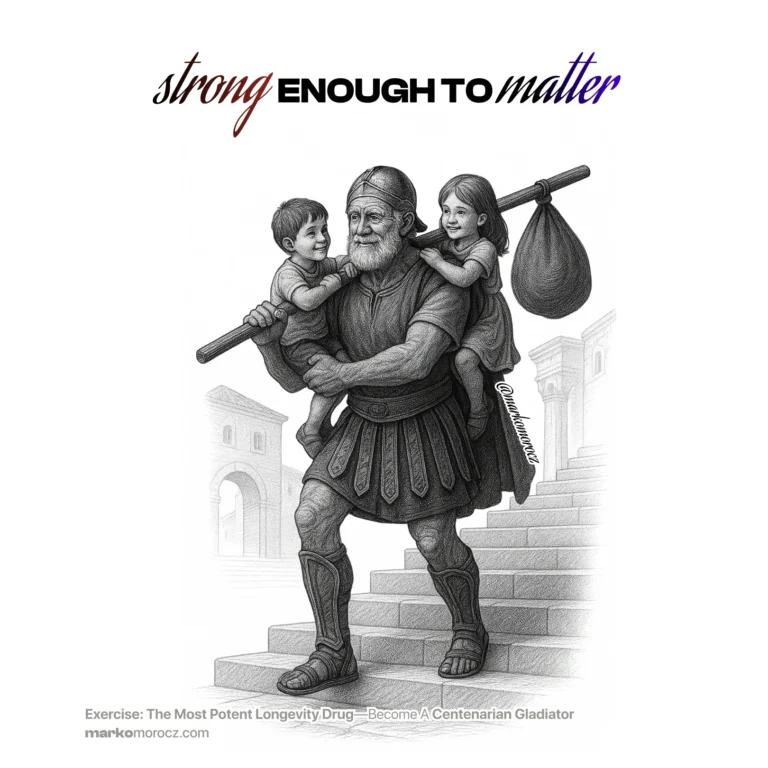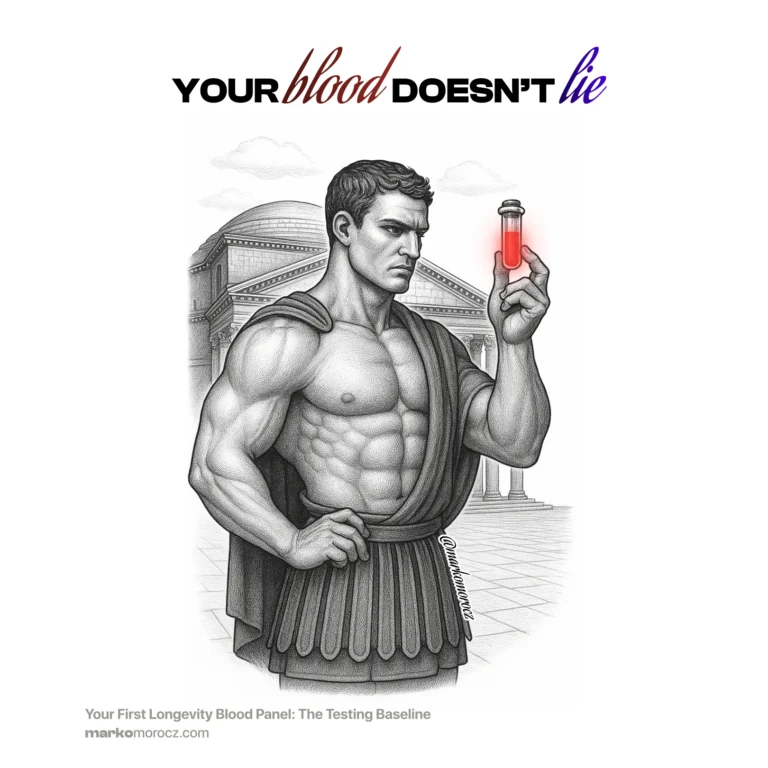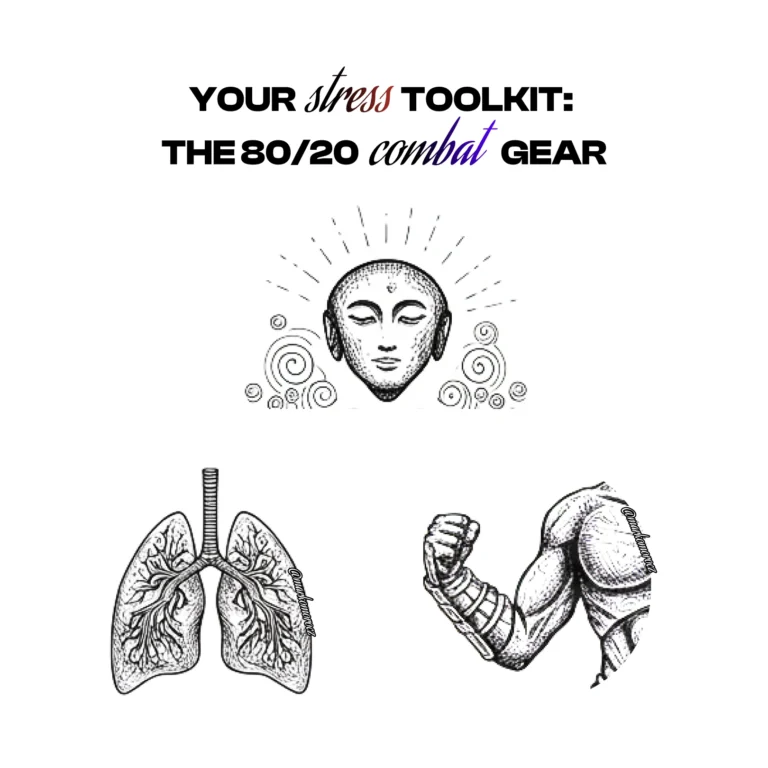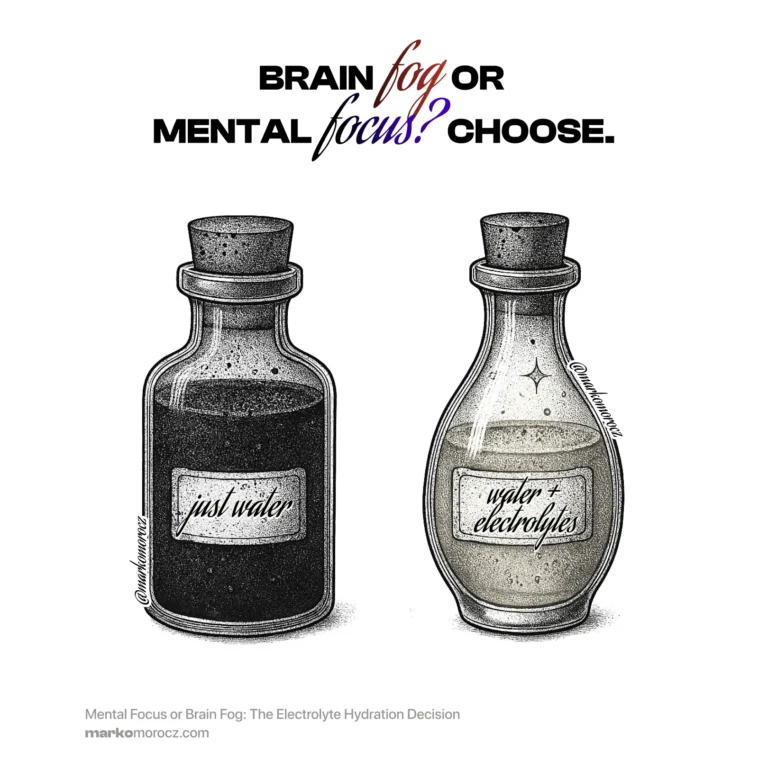Stress: Your Secret Weapon For Longevity Or A Silent Killer?
Stress is coming for you.
No escape. No negotiation. No mercy.
But here’s the secret they don’t tell you—it’s not your enemy. It’s just misunderstood. Mismanaged. Wasted.

In the longevity arena, chronic stress is one of the Four Horsemen‘s favorite weapons. It corrodes your defenses silently, until disease slips through.
But what if you could flip the script? What if stress could become your armor instead of your assassin?
The Stress Truth Nobody Tells You
“Stress doesn’t kill you. Your reaction to it does.” — Hans Selye, the father of stress research
The science is clear: stress itself isn’t toxic. Your response is.
Studies show that people who view stress as enhancing rather than debilitating show:
This isn’t wishful thinking. It’s biology. When you change how you THINK about stress, you change how your body PROCESSES it.
The Two-Faced Nature of Stress
Stress comes in two flavors:
Distress: The toxic kind. Chronic. Uncontrolled. The kind that ages you prematurely and feeds disease.
Eustress: The growth kind. Acute. Controlled. The kind that builds resilience and triggers adaptation.
Most people can’t tell the difference. Can you?
The VUCA Battlefield: Where Modern Minds Go to Die
We live in a VUCA world:
- Volatility: constant change
- Uncertainty: unpredictable outcomes
- Complexity: multiple interconnected factors
- Ambiguity: unclear meaning
Our primitive brains weren’t designed for this. They were built for tigers and starvation—not email notifications and social comparison.
The result?
Your ancient stress response gets triggered by modern problems. Your body prepares for physical battle while you sit motionless, scrolling through Instagram.
Your stress has nowhere to go, so it turns inward. Becomes chronic. Attacks you.
That’s not stress’s fault. It’s poor management.
The 4 Horsemen of Stress Symptoms
Stress leaves tracks. Learn to spot them before they multiply:
1. Physical Symptoms
- Heart pounding like it wants out
- Muscles tighter than your schedule
- Sleep that never satisfies
- Digestion that betrays you
2. Mental Symptoms
- Decisions that make you cringe later
- Concentration shorter than TikTok videos
- Memory holes you could drive through
- Racing thoughts that lead nowhere
3. Emotional Symptoms
- Irritability that turns small issues nuclear
- Anxiety that whispers catastrophes
- Emotional numbness when you should feel
- Mood swings wilder than crypto prices
4. Behavioral Symptoms
- Relationships that keep breaking
- Substance use that keeps increasing
- Work quality that keeps declining
- Sleep patterns that keep shifting
Recognize yourself? Good. Awareness is the first battle.
The Stress Cycle: Where Everything Goes Wrong
Here’s how stress actually forms:
- Trigger: external event or internal thought
- Thought: your interpretation of the trigger
- Emotion: your feeling response to the thought
- Action: your behavioral response to the emotion
Most people focus on the trigger or the emotion.
Both approaches fail. The secret? Intervene at the thought stage.
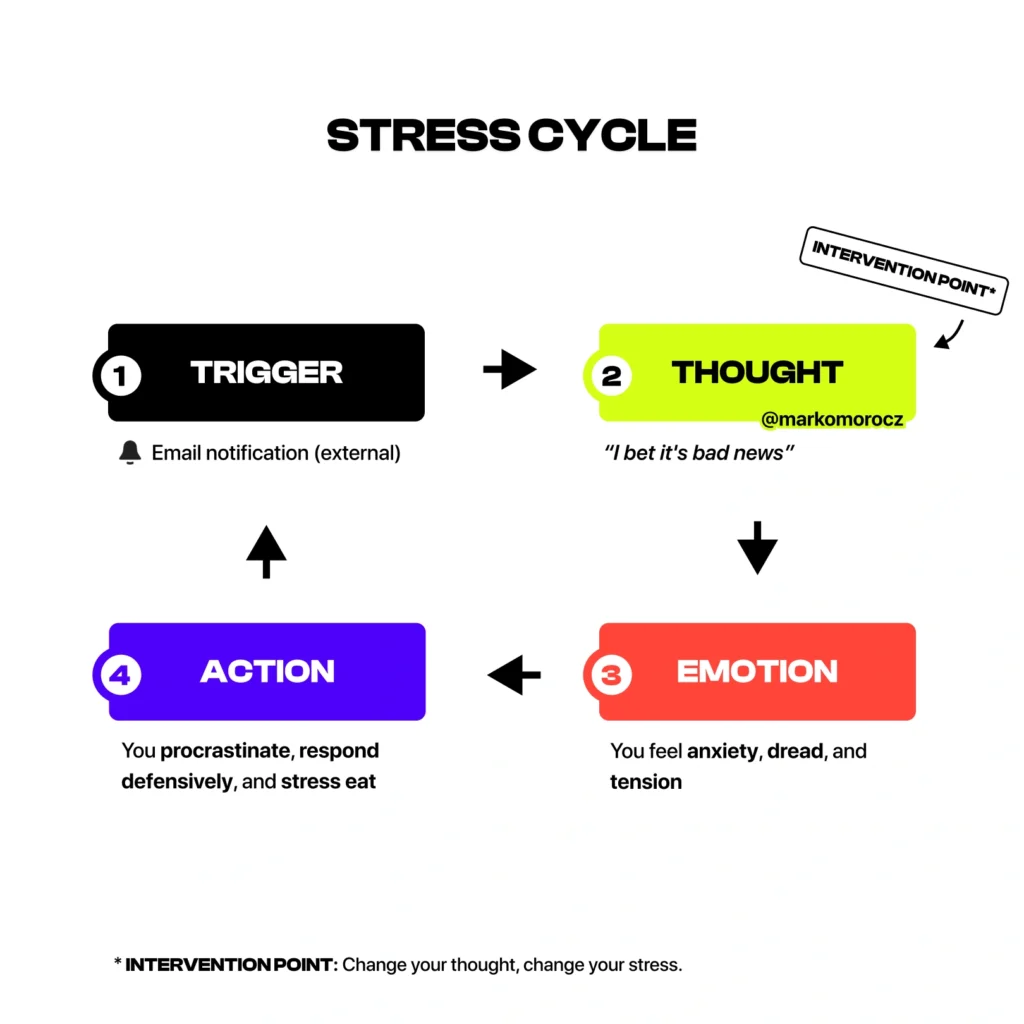
Change your thought, change your stress. Change your stress, change your life.
The Stress Arsenal: Tools That Actually Work
Enough theory. Let’s build your arsenal.
These aren’t fluffy self-care tips. These are battle-tested tools used by elite performers—from Navy SEALs to Olympic athletes to Fortune 500 executives.
They work because they target the stress cascade at multiple levels:
1. Breathing Tactics
- Box Breathing (4-4-4-4): The SEAL technique for instant calm
- 4-7-8 Method: The sleep inducer
- Alternate Nostril Breathing: The mind balancer
2. Physical Countermeasures
- Progressive Muscle Relaxation: Release tension you didn’t know you had
- Cold Exposure: Reset your nervous system
- 5-4-3-2-1 Grounding: Snap back to reality when anxiety hits
3. Mental Protocols
- 60-Second Meditation: Battlefield calm when you need it most
- Controllability Matrix: What you can and can’t control
- Thought Interruption: Breaking the rumination cycle
Don’t try them all. That creates more stress.
Pick ONE from each category. Master it. Then expand.
Read about these stress management techniques in detail to know how to use them and their scientific impact on you.
The Resilience Recipe: Building Your Mental Armor
Resilience isn’t born. It’s built.
The 7 protective factors that research shows create unbreakable minds:
- Self-belief: Faith in your capabilities
- Acceptance: Embracing reality as it is
- Solution-seeking: Finding paths forward
- Self-regulation: Managing your internal state
- Responsibility: Owning your responses
- Relationship-building: Creating support systems
- Goals and planning: Moving with purpose
These aren’t personality traits. They’re skills. Learnable. Practicable. Masterful.
The Acceptance Paradox: Surrender to Win
“Grant me the serenity to accept the things I cannot change, courage to change the things I can, and wisdom to know the difference.” — The Serenity Prayer
The Stoics knew it. The Buddhists knew it. Now science confirms it.
Accepting what you cannot control doesn’t make you weak. It makes you efficient. It stops you from wasting energy on battles you can’t win so you can focus on those you can.
In a Harvard study4, subjects who were told they had a button to stop an annoying noise (even though they never needed to use it) showed 35% less stress response than those who had no control.
The perception of control matters more than actual control.
From Stress Management to Post-Traumatic Growth
Stress isn’t just something to survive. It’s something to harness.
Research on Post-Traumatic Growth shows that people who effectively process stress report:
- Enhanced sense of personal strength
- Deeper relationships
- Greater appreciation for life
- New possibilities and opportunities
- Spiritual development
These aren’t despite stress. They’re because of it.
Properly channeled stress doesn’t just maintain your trajectory—it propels you forward.
The Stress-Longevity Connection: Why This Matters
Chronic stress ages you faster than almost anything else:
- It shortens telomeres (your cellular age markers)5
- It increases inflammation (the root of most chronic diseases)6
- It disrupts sleep (your primary recovery system)7
- It impairs immune function (your defense against disease)8
Master stress, and you add quality years to your life. Fail, and you accelerate your decline.
The choice is yours.
Your Next Steps: Building Your Daily Practice
Knowledge without action is just entertainment.
Here’s your stress management action plan:
- Identify your primary stress response (physical, mental, emotional, or behavioral)
- Select ONE tool from each category that resonates with you
- Practice daily for 21 days (5 minutes minimum)
- Track your results objectively (sleep quality, resting heart rate, HRV)
Don’t wait for stress to find you. Prepare now, when stakes are low. Because in the arena of life, the unprepared become prey.
But the prepared? They become legends.
References
- Keller, A., et al. (2012). “Does the perception that stress affects health matter? The association with health and mortality.” Health Psychology, 31(5), 677-684. ↩︎
- Jamieson, J. P., Nock, M. K., & Mendes, W. B. (2012). “Mind over matter: Reappraising arousal improves cardiovascular and cognitive responses to stress.” Journal of Experimental Psychology: General, 141(3), 417-422. ↩︎
- Dhabhar, F. S. (2014). “Effects of stress on immune function: The good, the bad, and the beautiful.” Immunologic Research, 58(2-3), 193-210. ↩︎
- Glass, D. C., & Singer, J. E. (1972). “Urban stress: Experiments on noise and social stressors.” Academic Press. ↩︎
- Epel, E. S., et al. (2004). “Accelerated telomere shortening in response to life stress.” Proceedings of the National Academy of Sciences, 101(49), 17312-17315. ↩︎
- Liu, Y. Z., Wang, Y. X., & Jiang, C. L. (2017). “Inflammation: The common pathway of stress-related diseases.” Frontiers in Human Neuroscience, 11, 316. ↩︎
- Âkerstedt, T. (2006). “Psychosocial stress and impaired sleep.” Scandinavian Journal of Work, Environment & Health, 32(6), 493-501. ↩︎
- Segerstrom, S. C., & Miller, G. E. (2004). “Psychological stress and the human immune system: A meta-analytic study of 30 years of inquiry.” Psychological Bulletin, 130(4), 601-630. ↩︎
Got insights or burning questions about stress management? Drop them below—I’d love to hear your take!
